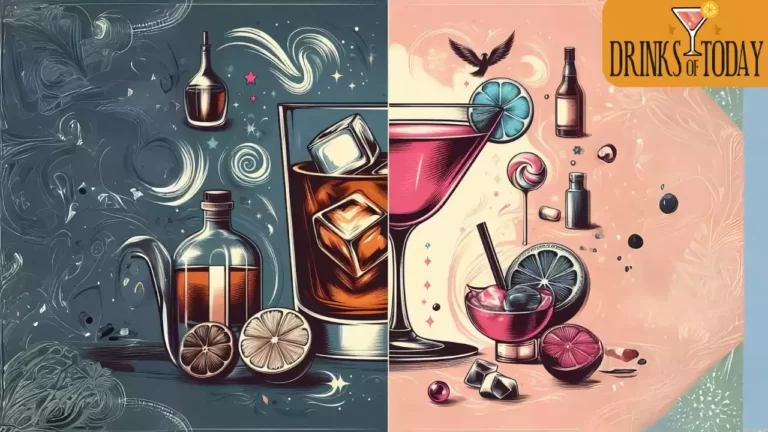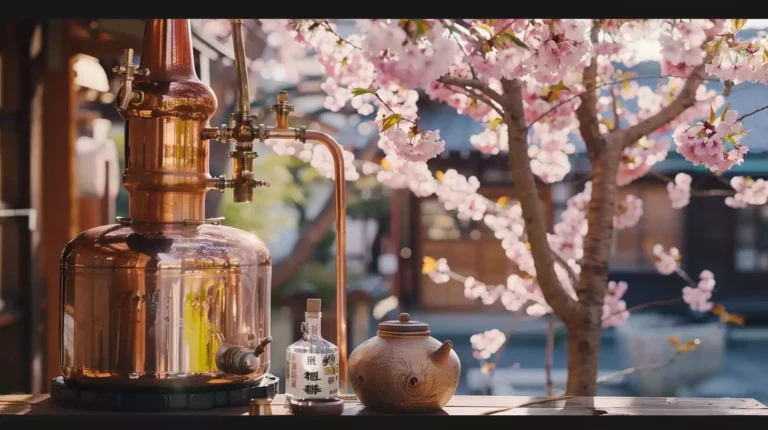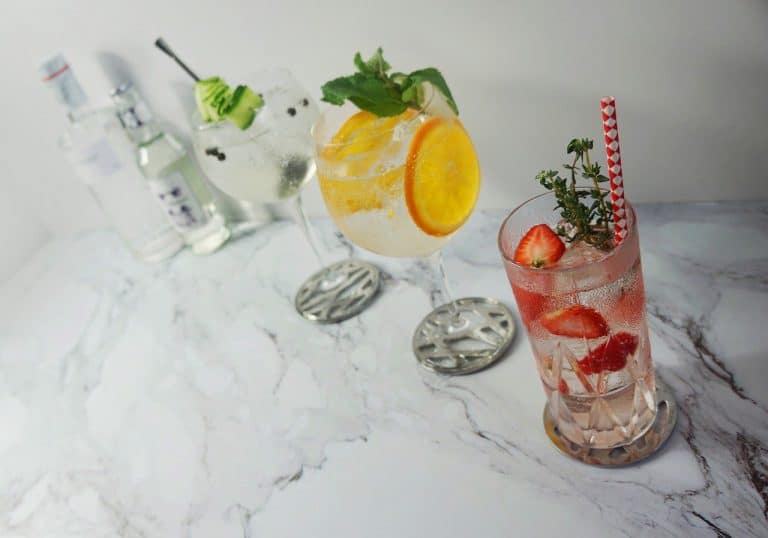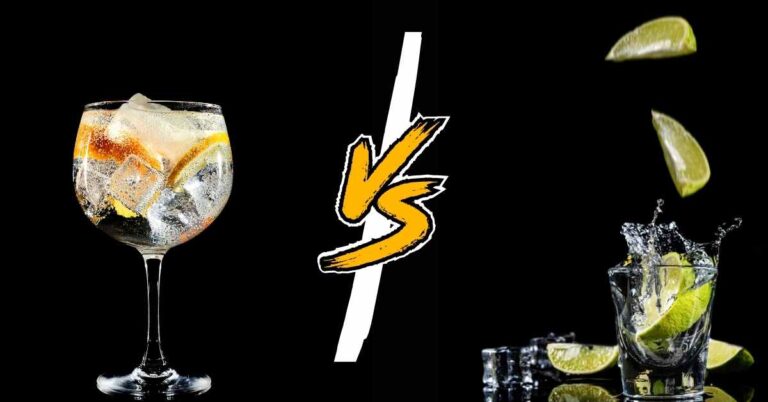Testing Whether Gin Can Revitalize Your Silver Collection
I was skeptical about using gin to clean silver, but it turns out the high alcohol content helps break down grime and bacteria. The chemical reaction between gin and silver creates a potent cleaning solution, tackling light tarnishing effectively.
While it’s a simple trick, gin’s cleaning abilities are limited, and alternative methods may be needed for severe tarnish. I’ve learned that there are better ways to preserve silver’s shine, and I’m curious to investigate more gentle and natural cleaning approaches to keep my silverware in pristine condition.
As I continue to find the best ways to care for my silver, I’m excited to discover even more surprising solutions.
Key Points
- Gin’s high alcohol content helps break down grime and bacteria on silver, making it a simple and effective cleaning solution.
- Gin can tackle light tarnishing on silver, but alternative methods may be needed for severe tarnish or valuable pieces.
- However, using gin on silver carries risks, including potential damage to certain surfaces, and better alternatives like specialized cleaners exist.
- Gin can be used as a cleaning agent, but it’s essential to explore alternative methods and take corrosion prevention measures to preserve silver items.
- For optimal results, combine gin with gentle polishing methods and a consistent cleaning regimen to maintain silver’s shine and quality.
Gin’s Chemical Composition Matters
As I researched cleaning silver with gin, I realize that the chemical composition of gin is what makes it an effective silver cleaner. The high alcohol content in gin is the key to its cleaning power.
It’s not just about the gin itself, but the way its chemical makeup interacts with the tarnish on silver. The alcohol in gin helps break down and dissolve the grime and bacteria that can accumulate on silverware, leaving it sparkling clean. This unique chemical composition is what makes gin an effective and natural cleaning agent for silver.
It’s no wonder that this technique has been passed down through generations! By understanding the role of gin’s chemical composition, I can appreciate why it’s such a popular method for cleaning silver. With its high alcohol content, gin is able to tackle even the toughest tarnish, revealing the shine and luster of the silver beneath.
Silver’s Reactivity to Gin
When I dip silverware into a gin bath, I’m harnessing the power of a chemical reaction that’s been centuries in the making. The combination of gin’s alcohol content and water creates a potent cleaning solution that’s perfect for tackling tarnished silver.
As I soak my silverware, the gin’s acidity helps break down the grime and bacteria that’s accumulated on the surface. It’s fascinating to see how the silver begins to shine again, revealing its original luster.
But what makes this reaction possible? The answer lies in silver’s reactivity to gin. As a precious metal, silver is prone to reacting with certain substances – and gin just happens to be one of them. When I use gin to clean my silver, I’m leveraging this reactivity to dissolve the tarnish and leave my silverware sparkling.
It’s a centuries-old trick that’s both effective and surprisingly simple.
The Ineffective Cleaning Process
I’ve found that relying solely on gin to clean my silverware often leads to disappointing results. After soaking my silver items in gin for 20 minutes, I’ve noticed that the tarnish remains, and the shine doesn’t return.
It’s clear that the alcohol content in gin alone isn’t sufficient to dissolve grime and bacteria on silver. In fact, I’ve gotten better results using alternative methods, like wrapping my silver items in aluminium foil and soaking them in clean water. This process helps to remove tarnish and leave my silverware looking sparkling clean.
For best results, I’ve learned to explore other cleaning techniques or seek professional advice, especially for my more valuable silver pieces.
Risks of Using Gin on Silver
As I investigate the risks of using gin on silver, I’ve come to realize that there are some serious drawbacks to ponder.
For one, using gin can actually damage certain types of silver surfaces, stripping away protective coatings or plating.
What’s more, the alcohol content in gin can be too harsh for some silver items, leading to discoloration or corrosion over time.
Damaging Silver Surfaces
If I’m contemplating using gin to clean my silver pieces, it’s important to understand the risks involved, especially when it comes to damaging silver surfaces. While gin might seem like a convenient cleaning solution, it can potentially harm my silver items if not used with caution.
Before I attempt to clean my silver pieces with gin, I need to take into account the quality and composition of the metal. If my silver isn’t solid, using gin could damage the metal, leading to unwanted consequences. Similarly, if I’ve delicate or plated silver pieces, gin might be too harsh, causing discoloration or tarnishing.
- Gin can be too harsh for delicate or plated silver pieces, leading to discoloration or tarnishing.
- Professional cleaning is advised for valuable or antique silver items to prevent any harm.
- I might need to purchase a polish and water to clean my silver pieces instead of relying on gin.
It’s vital to weigh the risks and explore alternative cleaning methods, such as using a gentle polish and water, to make sure my silver pieces remain in pristine condition.
Gin’s Ineffective Cleaning
While I may be tempted to reach for a bottle of gin to clean my silver pieces, it’s important to weigh the potential risks and limitations of using this method. Gin’s limitations in cleaning silver are significant, and I’ve learned that its alcohol content can potentially harm the metal, leading to tarnishing, discoloration, or damage to the surface of my silverware.
Silver’s sensitivity to certain substances, including gin, means that using it for cleaning can have unintended consequences. I’ve realized that relying on gin for cleaning silver is a common misconception – it’s not a reliable or effective method, especially for valuable or sentimental pieces. In fact, professional cleaning methods or specialized silver cleaning products are recommended over using gin.
The risks of using gin on silver are real, and I’ve come to understand that it’s not a suitable solution for all types of silver, especially those with delicate designs or plating.
Corrosion Risks Remain
I’ve discovered that one of the most significant risks of using gin to clean silver is the corrosion that can occur when the alcohol reacts with the metal.
This reaction can lead to damage or discoloration over time, especially if the silver isn’t solid and contains other metals or coatings. To minimize these risks, it’s essential to exercise caution when using gin on silver jewelry or silverware.
Some key considerations for preventing corrosion and preserving silver include:
- Implementing corrosion prevention measures, such as avoiding the use of gin on silver items with unknown metal compositions
- Using silver preservation techniques, like storing silver items in a cool, dry place to prevent tarnish formation
- Exploring alternative cleaning methods, like professional cleaning services, for valuable or delicate silver items
Better Alternatives for Cleaning Silver
For a more effective and gentle cleaning process, I choose specialized silver cleaners that are specifically designed to remove tarnish and grime without damaging the metal. These cleaners are specifically formulated to tackle tough tarnish and grime, leaving my silver items looking like new.
However, I also like to investigate alternative methods that are just as effective, if not more so. A vinegar solution, for instance, can be a great natural cleaner for silver. I simply soak the item in a mixture of equal parts water and white vinegar, and let it sit for a few hours before rinsing and drying. The acid in the vinegar helps break down tarnish, leaving the silver sparkling.
I’ve also had success with the lemon juice method, where I rub a slice of lemon on the tarnished area and then rinse with warm water. And for tougher stains, I turn to a baking soda paste, which gently scrubs away grime without scratching the metal. These alternatives aren’t only effective but also gentle on my silver items.
The Science Behind Silver Tarnish
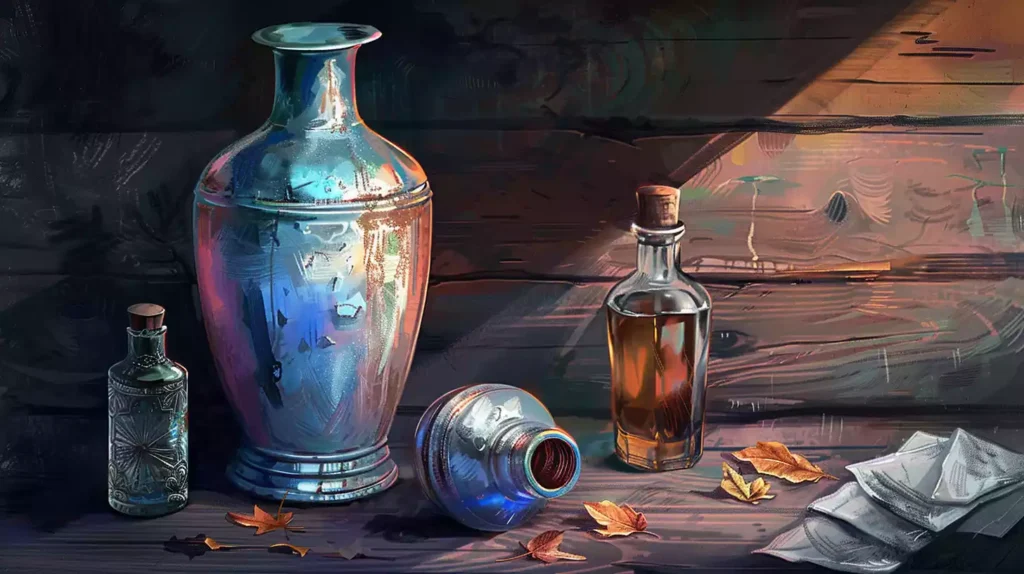
As I investigate the science behind silver tarnish, I’m struck by the intricate process that unfolds when silver meets air and sulfur compounds.
It’s fascinating to learn that a chemical reaction occurs, resulting in the formation of a silver sulfide layer on the surface of the metal, which eventually leads to tarnishing.
Tarnish Formation Explained
When I hold a silver item, I often wonder what triggers the tarnishing process, and it all boils down to a chemical reaction between the silver and sulfur-containing substances in the air. This reaction leads to the formation of tarnish, a dark, dull layer that can be removed through various cleaning methods. But what exactly causes this reaction to occur?
Some common culprits behind silver tarnish include:
- Air pollution, which contains sulfur dioxide and nitrogen oxides that react with silver
- Certain foods, such as eggs and mayonnaise, which contain sulfur compounds
- Even rubber bands, which can release sulfur-containing particles that trigger tarnish
Understanding the science behind tarnish formation is important in choosing the most effective cleaning solution. Furthermore, it highlights the importance of proper storage and care to prevent tarnish buildup on silver items over time. By recognizing the environmental factors and chemical reactions involved, we can develop effective tarnish prevention strategies to keep our silver items shining.
Chemical Reaction Occurs
Looking into the intricacies of silver tarnish, I find that a chemical reaction occurs between the metal and the environment, eventually leading to the formation of that unsightly dark layer. This reaction is a result of oxidation, where the silver reacts with sulfur compounds in the air, causing the tarnish.
| Chemical Reactions | Effect on Silver |
|---|---|
| Oxidation | Forms tarnish layer |
| Gin’s alcohol content | Dissolves grime and bacteria |
| Silver-gin reaction | Removes tarnish, restores shine |
| Rinsing | Removes residue, prevents re-tarnishing |
| Silver-air reaction | Causes tarnish formation |
The good news is that this tarnish can be reversed using gin, which contains alcohol that helps dissolve the grime and bacteria contributing to the tarnish. By soaking the silver in gin, the chemical reaction is reversed, and the shine of the silverware is restored.
Safe Methods for Polishing Silver
I turn to safer methods for polishing silver, including an unconventional one that’s gained popularity: using gin to clean and restore shine to my tarnished silver items. While gin can be effective, I also consider other gentle methods to avoid damaging my valuables. Here are some alternative approaches I’ve found:
- Gentle abrasion using a soft cloth and mild soap
- Natural cleaners like baking soda and water to remove tarnish
- DIY polishes made from ingredients like cornstarch and vinegar
These methods aren’t only safer but also environmentally friendly. I’ve learned that it’s essential to handle silver items with care, avoiding harsh chemicals and abrasive materials that can scratch or damage the surface. By opting for these gentle and natural approaches, I can enjoy my silver treasures for years to come.
Gin’s Limited Uses for Cleaning
As I investigate the world of gin-based cleaning, I’ve come to realize that its uses are more limited than I initially thought.
While gin can be a great tool for removing silver tarnish and restoring a metallic shine, its abilities don’t extend far beyond that.
In fact, its cleaning properties are most effective for specific tasks, like revealing the hidden beauty of silver items.
Silver Tarnish Removal
One effective, albeit unconventional, approach to silver tarnish removal is by soaking the item in a mixture of gin and water, although it’s essential to understand its limitations. As I investigate this natural remedy, I realize it’s not the most effective method, but it’s worth exploring.
When it comes to DIY solutions for silver tarnish removal, I’ve found a few household hacks that are worth considering:
- Using baking soda and water to create a paste that can be applied to the tarnished area
- Polishing with a soft cloth and a mixture of lemon juice and salt
- Soaking the item in a mixture of gin and water, as mentioned earlier
While these natural remedies may not be the most efficient solutions, they can be useful in a pinch. However, for more severe cases of tarnish, I recommend exploring professional cleaning methods or specialized silver cleaning products.
It’s essential to exercise caution and consider alternative cleaning methods when dealing with valuable or tarnished silver pieces.
Gin’s Cleaning Abilities
Gin’s cleaning abilities are surprisingly effective, albeit limited, and can be leveraged to remove light tarnishing from silver items. The alcohol content in gin helps dissolve grime and bacteria on silverware, revealing its shine.
For light cleaning, I can apply gin to a cotton pad and gently wipe it on silver items. However, it’s important to rinse silver thoroughly with dish soap after using gin for cleaning.
| Gin’s Cleaning Abilities | Silver’s Reaction |
|---|---|
| Effective against light tarnishing | Reveals shine by dissolving grime and bacteria |
| Limited uses for heavy tarnishing | Requires rinsing with dish soap after use |
| Alternative to harsh chemicals | Not recommended for highly valuable or delicate items |
While gin can be a useful cleaning agent, it’s essential to acknowledge its limitations. For more severe tarnishing or delicate items, I should consider alternative cleaning methods or seek professional cleaning to prevent damage. By understanding gin’s effectiveness and limitations, I can make informed decisions about cleaning my silver items.
Metallic Shine Restoration
I’ve found that gin’s effectiveness in restoring metallic shine is limited to specific situations, requiring careful consideration before using it as a cleaning agent. While it can be a useful tool in certain cases, it’s essential to understand its limitations to avoid damaging your silver items.
When it comes to silver preservation techniques, gin can be a valuable asset. Here are a few sparkling silver secrets to keep in mind:
- Gin’s silver benefits are most pronounced when used to clean solid silver items, as plated silver may be damaged by the alcohol content.
- For a quick and light clean, applying gin to a cotton pad can be effective, but for tougher cleaning, soaking silver in gin and water is more effective.
- Gin can also help dissolve grime and bacteria on silverware, making it an effective cleaning agent for everyday items.
Preserving Silver’s Shine and Quality
By embracing a consistent cleaning regimen, I can guarantee my silverware remains tarnish-free and radiant, maintaining its shine and quality for years to come. Through effective silver preservation techniques, I’ve learned that regular cleaning is key to preventing tarnish buildup. To maintain my silver’s shine, I’ve developed a few shine maintenance tips.
I make sure to handle my silver pieces with care, avoiding scratches and fingerprints and the I store them in a cool, dry place to prevent moisture buildup.
After this I clean my silver regularly, using gentle cleaning solutions like gin to dissolve grime and bacteria.
By following these quality silver care tips, I can rest assured that my silverware will remain in pristine condition.
With a little effort, I can enjoy my beautiful silver pieces for years to come, their shine and quality intact. By incorporating these simple techniques into my cleaning routine, I can preserve the beauty and value of my silverware for generations to come.
Traditional Methods for Cleaning Silver
As I explore the world of silver care, I find myself drawn to traditional methods that have stood the test of time, including using gin as a natural cleaning agent. Along with gin, there are other tried-and-true techniques for keeping silver sparkling.
Some traditional methods for cleaning silver include:
- Using silver polishing cloths to buff away tarnish and leave a brilliant shine
- Applying a mixture of baking soda and water to create a paste that lifts grime and tarnish
- Soaking silver in a solution of white vinegar and water to dissolve mineral deposits and restore luster
These traditional methods, combined with the power of gin, offer a thorough approach to silver cleaning techniques, polishing methods, and tarnish prevention strategies.
By incorporating these techniques into my silver care routine, I’m confident that my silver pieces will retain their sparkle and shine for years to come.

